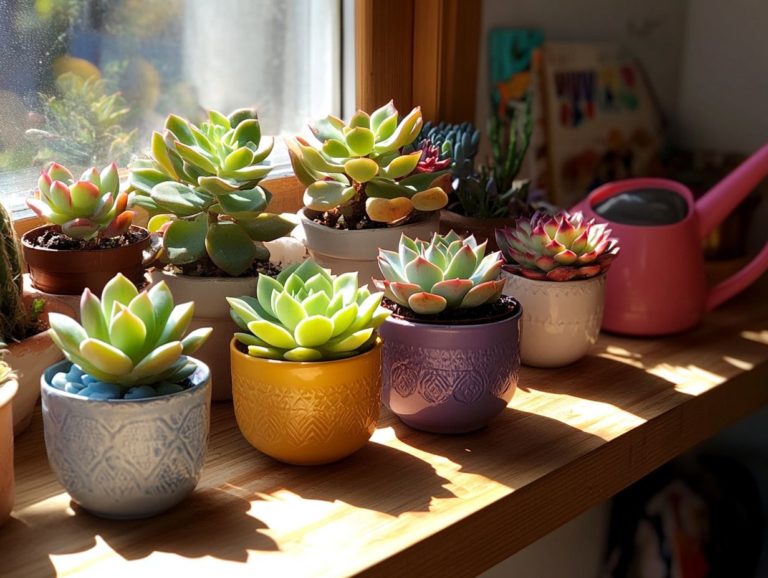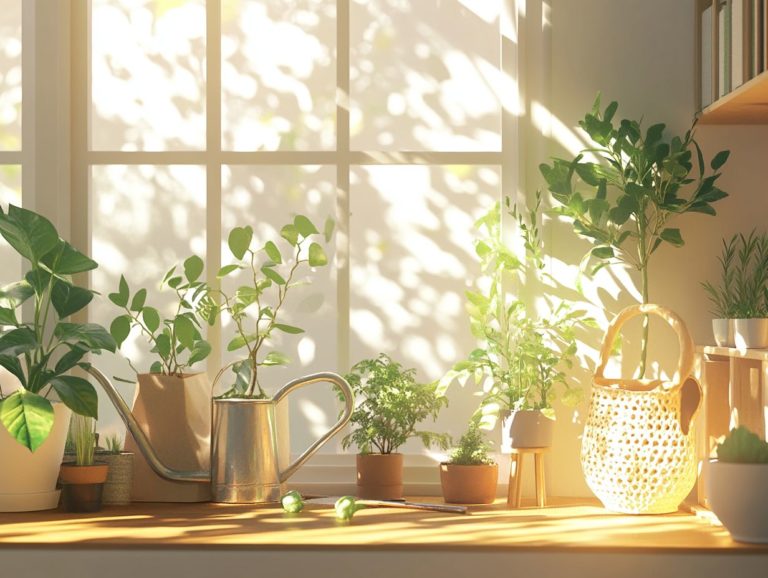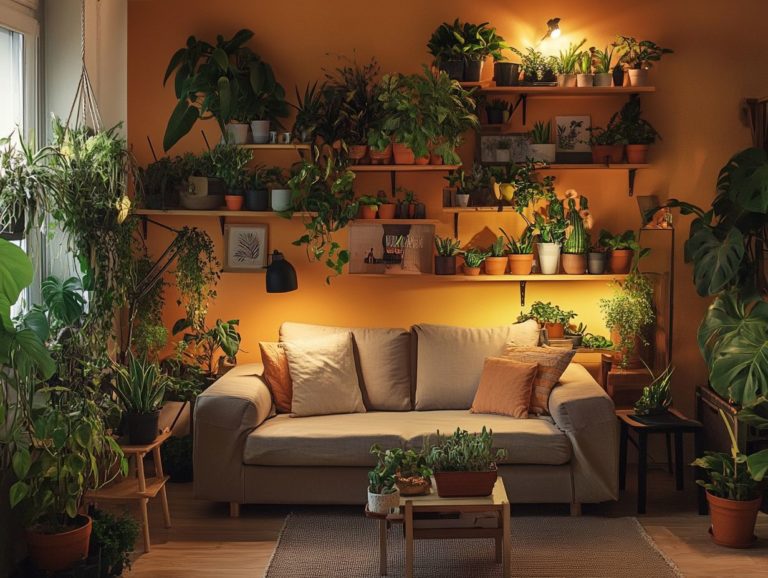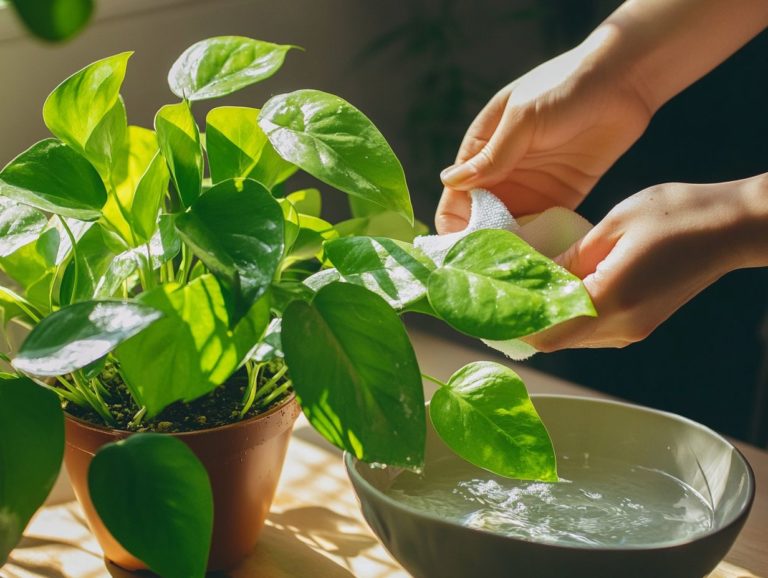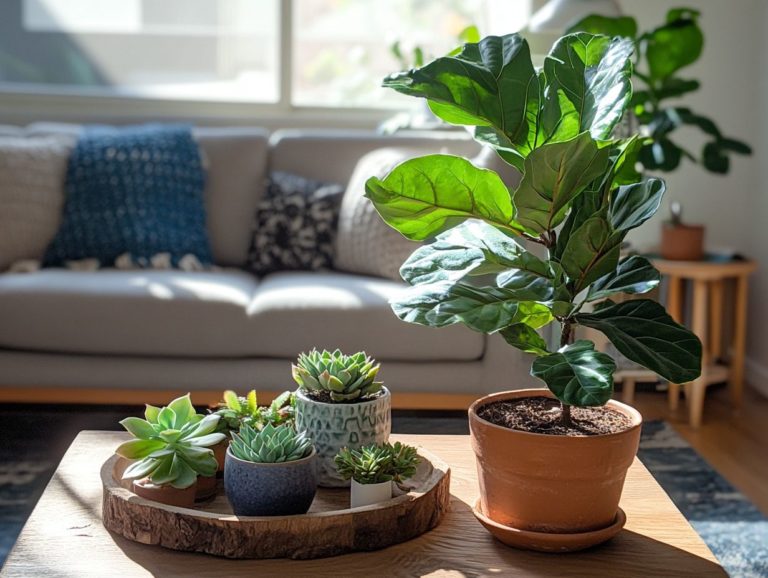What are the Best Indoor Plants for Low Light?
Indoor spaces frequently pose distinct lighting challenges, making it difficult for plants to truly thrive. However, the right selection of indoor plants can effortlessly transform these low-light environments into verdant sanctuaries.
In low light conditions, various plant recommendations ensure your indoor oasis flourishes. These plants can enhance your indoor space’s atmosphere, which are often challenging for houseplants that thrive in these conditions. The Boston Fern is a classic choice for adding greenery indoors, while the Arrowhead Vine is appreciated for its unique leaf shapes. Having plants in low light can brighten your indoor spaces, along with the aesthetic and health benefits they provide.
Essential care tips and common pitfalls will help you ensure your plants flourish, even in the absence of abundant sunlight.
Contents
- Key Takeaways:
- Understanding Low Light Environments
- Benefits of Indoor Plants in Low Light
- Choosing the Right Plants for Low Light
- Caring for Indoor Plants in Low Light
- Common Mistakes to Avoid
- Frequently Asked Questions
- What are the Best Indoor Plants for Low Light?
- Can I grow any type of plant in low light conditions?
- Are there any flowering plants that do well in low light?
- How often should I water my low light indoor plants?
- Do low light plants still need sunlight?
- What are some other benefits of having indoor plants?
Key Takeaways:
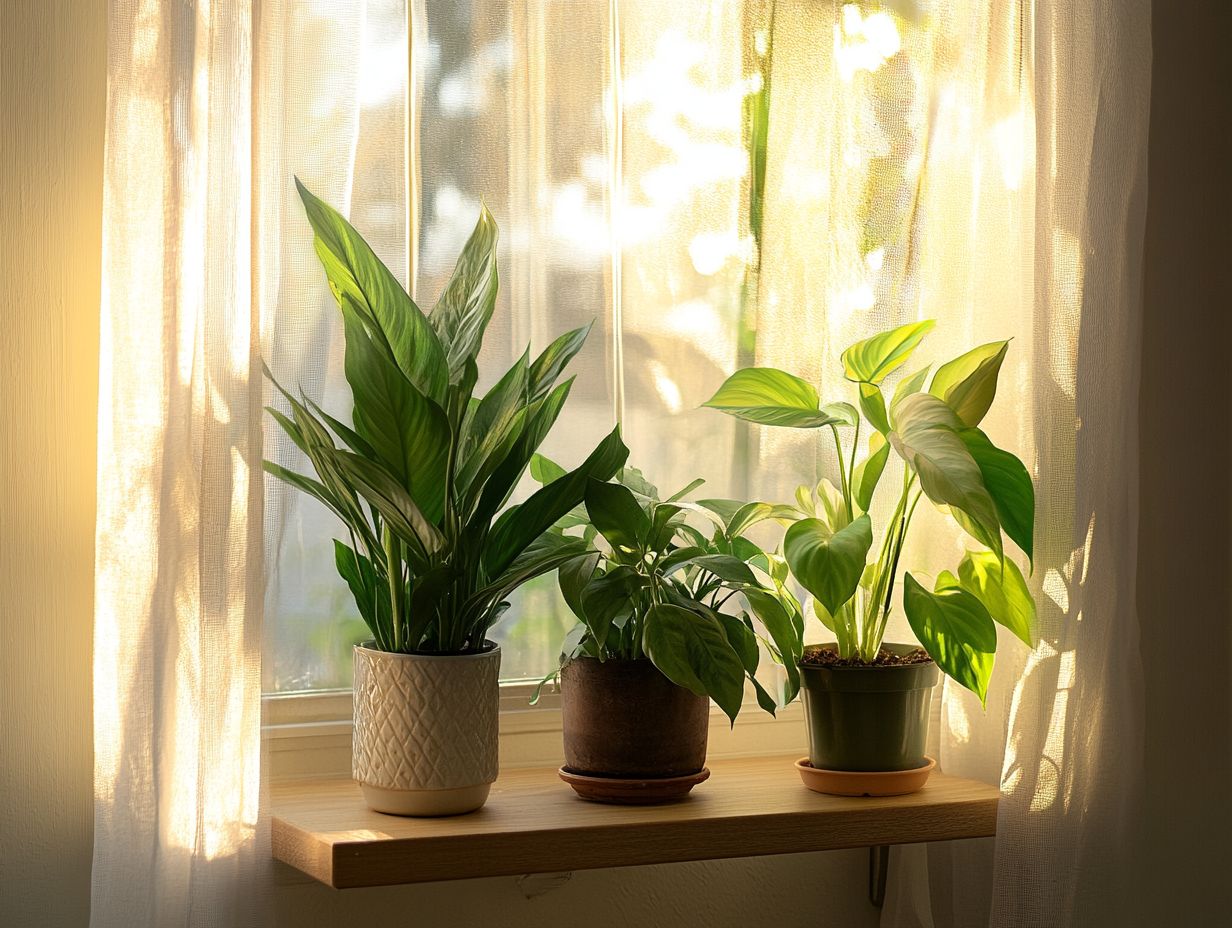
- The Peace Lily is a favorite air-purifying plant, and the Snake Plant also thrives in low light. Popular species like Dracaena varieties and the ZZ Plant are beloved for their resilience and ability to thrive in dim conditions.
- Some benefits of having indoor plants in low light include aesthetics and health benefits, such as cleaner air.
- To avoid common mistakes, such as overwatering or underwatering, research and choose plants suited to low light environments.
Understanding Low Light Environments
Grasping the details about low light conditions is essential for anyone aspiring to nurture indoor plants that thrive in such environments. Whether you re just starting out or have gardening experience, recognizing the factors that influence light availability can significantly enhance your plant care journey.
Remember, low light doesn’t equate to no light; many houseplants are remarkably adaptable and can flourish in these circumstances as long as their specific needs are addressed. This insight allows you to select the right plants, including understanding what is the best indoor plant for beginners, and ensure they remain healthy and vibrant within your indoor spaces.
Factors that Contribute to Low Light
Several factors contribute to low light conditions, and understanding their impact on your indoor gardening practices is essential. For example, consider window placement: north-facing windows typically provide less direct sunlight, while south-facing ones can bathe your plants in ample light. The season also plays a significant role; shorter days in winter mean reduced light availability. Additionally, surrounding structures like tall buildings or trees can cast shadows that may not be sufficient for certain plants.
Understanding these elements can make your indoor garden thrive! After all, proper light exposure is the key to nurturing thriving plants.
Benefits of Indoor Plants in Low Light
Indoor plants that flourish in low light significantly elevate the aesthetics of your space while providing remarkable health benefits, such as air purification and mood enhancement. These botanical companions foster a serene atmosphere, making them perfect for homes and workplaces.
With their lush foliage and vibrant blooms, they can transform any indoor setting into a rejuvenating oasis, even under limited lighting conditions. To ensure your plants thrive, it’s important to know what is the best light for indoor plants. Moreover, many low light houseplants are low-maintenance, making them an excellent choice for anyone who might not consider themselves a gardening expert.
Aesthetics and Health Benefits
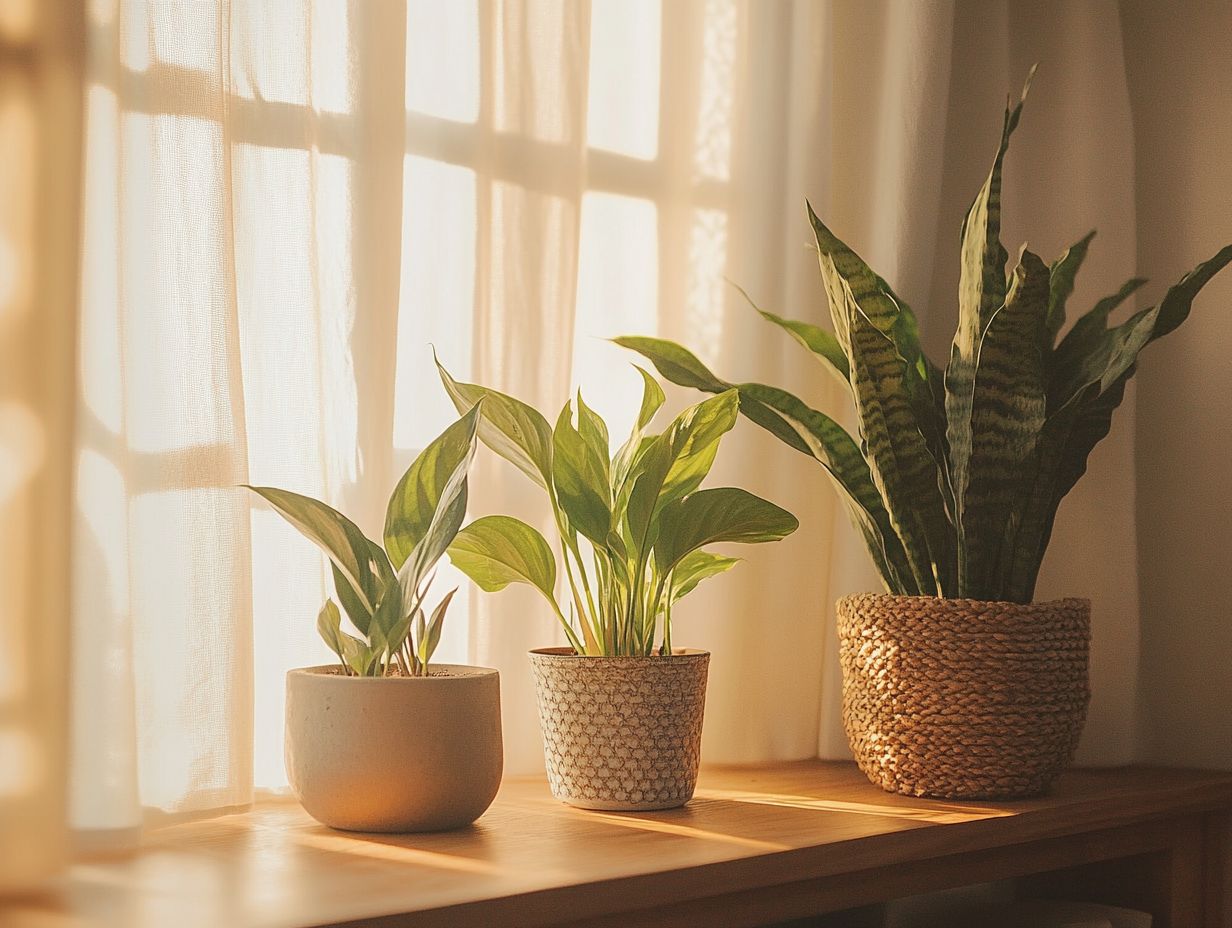
The aesthetic appeal of indoor plants is simply unmatched. They transform any space into a visual paradise and provide remarkable health benefits.
Take the elegant peace lily as an example. With its glossy green leaves and striking white blooms, it elevates your interiors and cleans the air by removing toxins like formaldehyde, a chemical often found in household items.
Then there’s the snake plant, boasting upright, variegated foliage. This stunning decor piece works quietly at night to produce oxygen, turning your bedroom into a healthier sanctuary.
Don’t overlook the cheerful spider plant, either. Its arching leaves and small offshoots add a whimsical touch while helping to purify the air, bringing a lively element to your shelves and tabletops.
By integrating these green companions into your home decor, you uplift the atmosphere. You also foster a sense of well-being, creating a tranquil and inviting space that feels just right.
Choosing the Right Plants for Low Light
Choosing the right plants for low light conditions can be a rewarding endeavor. Focus on easy indoor plants like the Cast Iron Plant, which is ideal for those with a busy lifestyle, and the Money Tree, often sought after for its good luck associations. These are perfect for beginners.
A thoughtfully curated selection of houseplants that thrive even in dim lighting can infuse your home with life and vibrancy. Transform those less-than-ideal conditions into a lush retreat.
It s vital to recognize which plants can adapt to limited light while still offering beauty and cleaning the air. With the right plant recommendations, you can cultivate a vibrant indoor garden that elevates your space effortlessly.
Types of Plants that Thrive in Low Light
When choosing indoor plants for low light, explore amazing options like Dracaena, Zamioculcas (also known as the ZZ Plant, a favored choice for its adaptability), and Philodendron species, admired for their attractive foliage and ease of care. These plants are celebrated for their ability to thrive in such conditions.
The snake plant shines as an outstanding option thanks to its resilience and ability to clean the air. Not only do these plants adapt beautifully to dim lighting, but they also bring elegance to any space with their distinct foliage.
Caring for them is a breeze just occasional watering and well-draining soil are all they need, making them perfect even for those new to plant care.
If you’re keen on fostering a healthier indoor environment, consider air-purifying options like Pothos, one of the easiest plants to care for in low light, and Peace Lily. For more information on resilient varieties, check out what are the most resilient indoor plants. Each offers unique aesthetic charm and health benefits, ensuring that your low-light spaces are both visually appealing and enriching.
Caring for Indoor Plants in Low Light
Caring for indoor plants in low light conditions requires a refined approach that emphasizes tailored techniques in watering, fertilizing, and trimming to promote healthy growth and longevity.
Many low-light houseplants have distinct needs that set them apart from their sun-loving relatives. It’s crucial to adapt your care strategies accordingly. Grasping the subtleties of watering schedules and fertilization can transform your indoor garden into a thriving oasis, while thoughtful trimming can significantly enhance airflow and light penetration. For optimal results, consider learning more about best practices for indoor plant care.
Watering, Fertilizing, and Pruning Tips
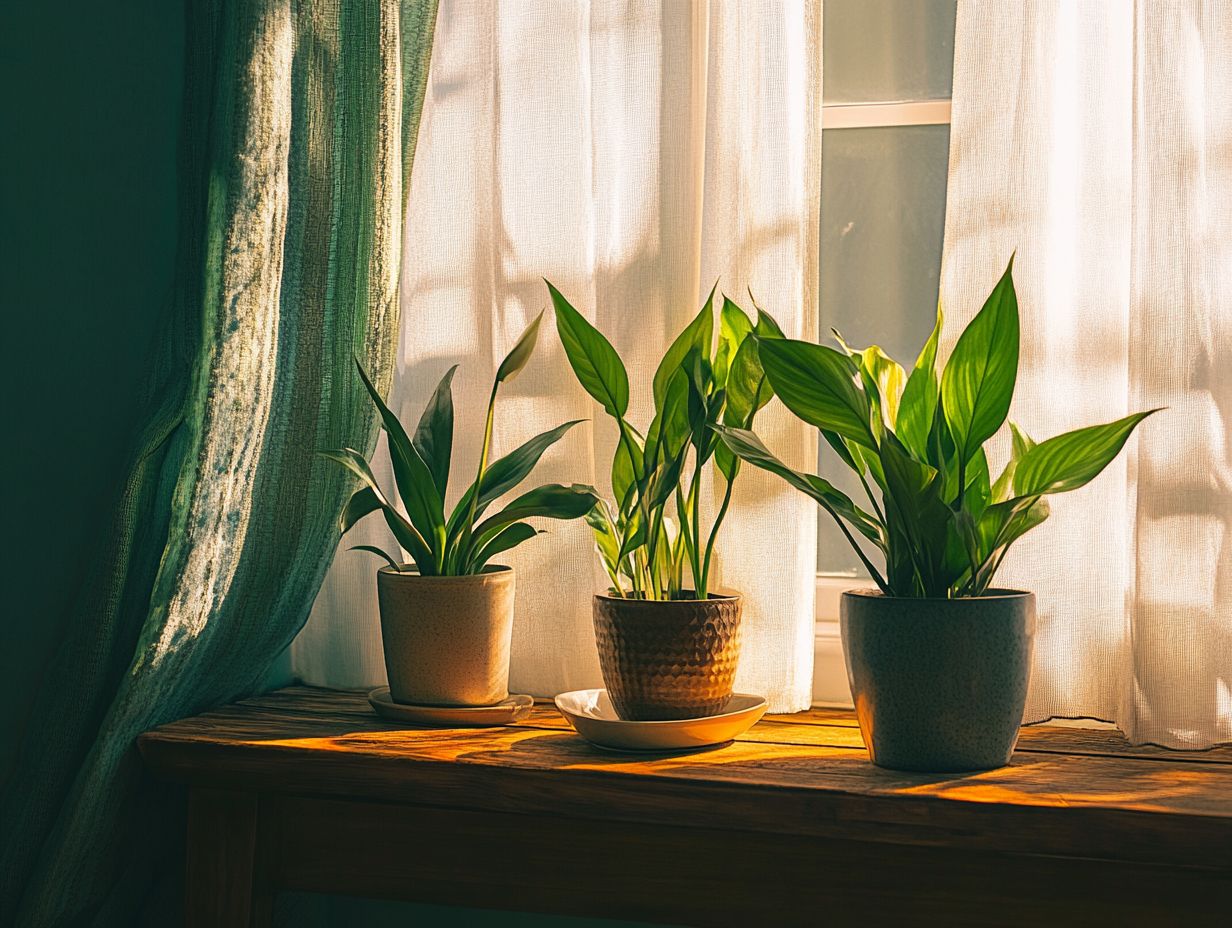
When caring for your indoor plants in low light, it s essential to craft a tailored approach to watering, fertilizing, and pruning that meets their specific needs.
Understanding how these plants adapt to their environment allows you to optimize their care routine. For instance, adjust your watering practices based on the humidity levels in your space. Plants may require less water in drier conditions. Every few months, using a mixed fertilizer a blend of fertilizer and water can provide them with essential nutrients without overwhelming them.
Pruning is equally crucial for promoting healthy growth. Removing yellowing leaves and trimming back leggy stems encourages bushier growth. This enhances the aesthetic appeal of your plants while boosting their overall vitality, ensuring they thrive even in lower light conditions.
Common Mistakes to Avoid
Avoiding common mistakes is crucial for the successful care of your indoor plants, particularly in low-light conditions. Striking the right balance between overwatering and underwatering is vital, as either can significantly affect the health of your plants.
Overwatering and Underwatering
Overwatering and underwatering are frequent pitfalls encountered by indoor gardeners, particularly with plants in low light conditions.
These issues often reveal distinct signs that guide you in assessing your plants’ needs. For example, yellowing leaves typically suggest overwatering, while dry, crispy leaf edges may indicate your plants are longing for a drink. Regularly monitoring soil moisture is crucial; a moisture meter can transform your approach to maintaining that delicate balance.
Adjust your watering schedules now to keep your plants thriving! Plants generally require less water during their dormant winter months. Proper drainage systems in your pots will help prevent water accumulation, ensuring that the roots remain healthy and flourish.
Frequently Asked Questions
What are the Best Indoor Plants for Low Light?
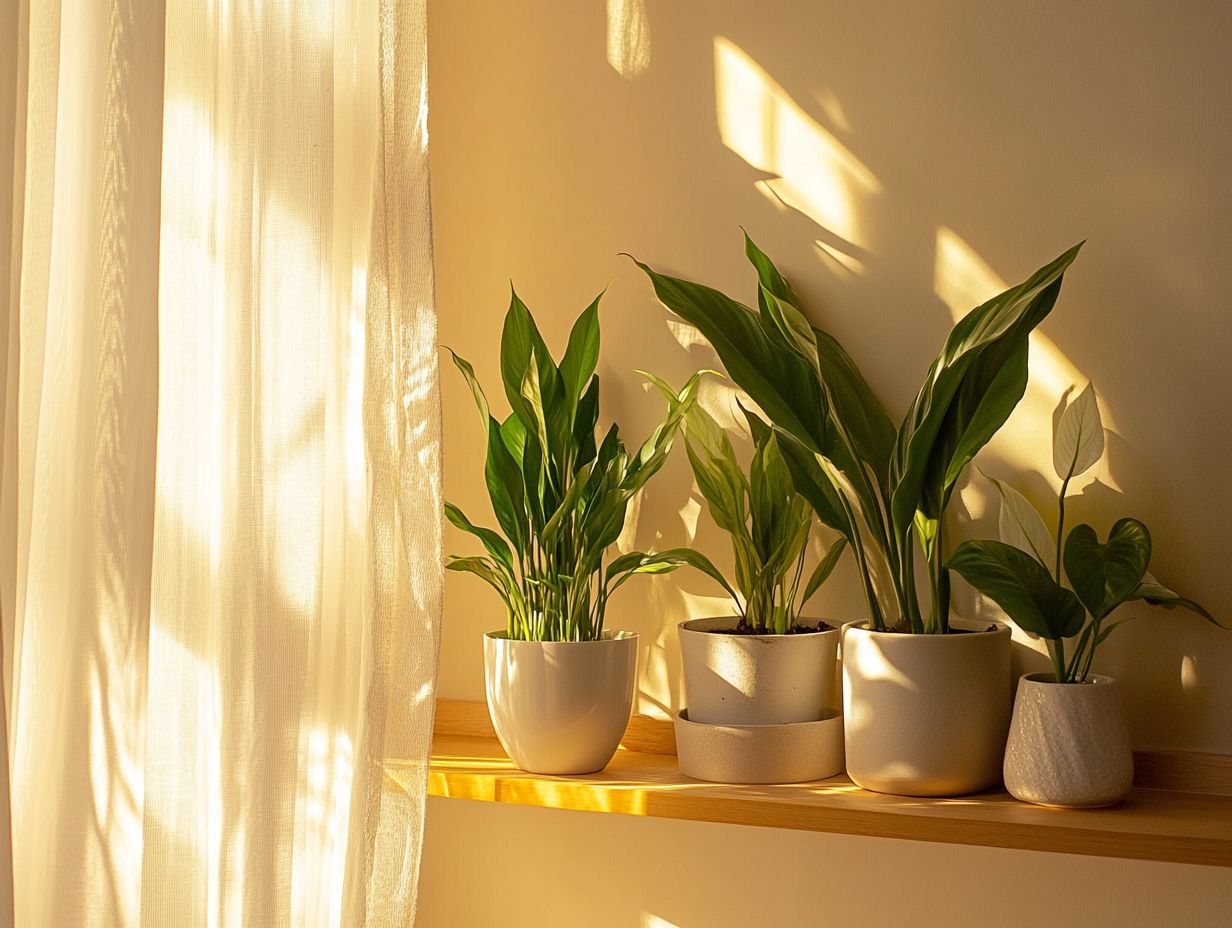
There are several great options for low light indoor plants, including the peace lily, snake plant, and pothos.
Can I grow any type of plant in low light conditions?
No, not all plants can survive in low light environments. It’s important to choose plants that are specifically suited for low light conditions.
Are there any flowering plants that do well in low light?
The peace lily is an excellent choice for low light. It adds beauty with its stunning white flowers!
How often should I water my low light indoor plants?
It’s important not to overwater your plants, especially in low light conditions. Generally, it’s best to water when the top inch of soil feels dry to the touch.
Do low light plants still need sunlight?
While low light plants can survive in minimal sunlight, they still require some natural light to thrive. Try placing them near a window or using a grow light for added illumination.
What are some other benefits of having indoor plants?
Indoor plants not only add aesthetic appeal to a space, but they also help purify the air and can improve overall mood and well-being. Explore your options with these low-light plants! Start your indoor garden adventure today!

